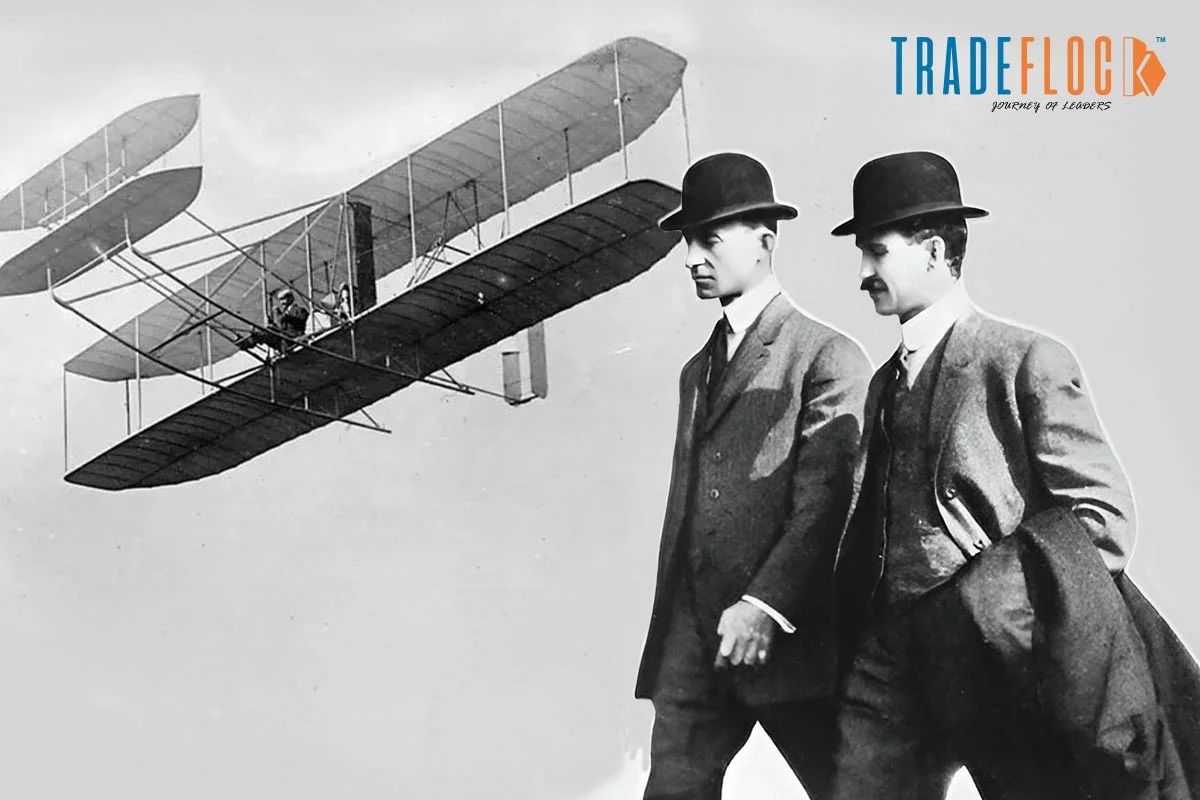On September 20, 1904, the Wright brothers, Orville and Wilbur, achieved a monumental milestone in aviation history. On this day, Wilbur Wright successfully piloted the Flyer II aircraft in a complete circle, marking the first time an aeroplane had ever achieved such a feat. This historic flight took place at Huffman Prairie, a cow pasture near Dayton, Ohio, and marked a significant leap forward in the quest for controlled sustained flight.
The Constant Efforts Paid Off
The journey of this historic flight began years earlier, rooted in the Wright brothers’ fascination with flight. Born in the late 19th century, Orville and Wilbur Wright grew up in a household that encouraged intellectual curiosity and mechanical thinking. Their father, Milton Wright, was a bishop in the Church of the United Brethren in Christ, and their mother, Susan Catherine Koerner Wright, had a knack for mechanics. This environment developed the brothers’ interest in aeronautics.
The Wright brothers’ first significant breakthrough came on December 17, 1903, when they achieved the first controlled, sustained flight of a powered, heavier-than-air aircraft with the Wright Flyer at Kill Devil Hills, near Kitty Hawk, North Carolina. This flight, however, was just the beginning. The Wrights knew that to revolutionise aviation truly, they needed to develop an aircraft capable of more than just short, straight-line flights.
The Barriers to the Success Path
The path to the September 20, 1904 flight was fraught with challenges. After their initial success in 1903, the Wright brothers returned to Dayton to continue their experiments. They constructed the Flyer II, an improved version of their original aircraft. The Flyer II featured a more powerful engine and a redesigned structure to enhance stability and control.
One of Wright’s primary challenges was achieving reliable control of their aircraft. Early flights were often short and ended in crashes due to difficulties in maintaining balance and direction. The brothers experimented with various control mechanisms, eventually developing a three-axis control system that allowed the pilot to steer the aircraft effectively and maintain its equilibrium.
Another hurdle was finding an appropriate location for their experiments. Unlike the windy conditions at Kitty Hawk, Huffman Prairie offered little natural wind to aid in takeoff. To overcome this, the Wright brothers devised a catapult system to launch their aircraft. This system involved a 20-foot-high wooden derrick and a weight that, when released, provided the necessary thrust for takeoff.
Despite these innovations, early flights in 1904 were troubled by mechanical failures and crashes. The brothers preserved, making numerous adjustments to their aircraft and refining their piloting skills. Their determination paid off on September 20, when Wilbur successfully completed a full circle in the Flayer II, covering 4080 feet in 1 minute and 16 seconds.
The Impact that Changed the World
The successful flight of the Flayer II had profound socio-economic implications, both immediately and in the long term. In the early 20th century, the world was on the verge of significant technological advancements, and the Wright brothers’ achievements in aviation were at the forefront of this transformation.
In the short term, the Wright brothers’ success drew the media’s and the public’s attention. Newspapers worldwide reported on their achievements, and the brothers received numerous invitations to demonstrate their aircraft. This publicity helped to establish the Wrights as pioneers in aviation and attracted interest from potential investors and governments.
The long-term impact of the Wright brother’s’ success was even more profound. Their innovations in aircraft design and control laid the foundation for the development of modern aviation. The principles they established in aerodynamics and flight control are still used in aircraft design today. Achieving controlled, sustained flight opened up new transportation, commerce and warfare possibilities.
Economically, the advent of aviation created new industries and job opportunities. The development of commercial airlines revolutionised travel, making it faster and more accessible. Air cargo services transformed global trade, allowing for the rapid transportation of goods across long distances. The military also recognised the strategic importance of aviation, leading to the development of air forces and the use of aircraft in warfare.
The Wright brothers’ achievements significantly impacted society’s perception of technology and innovation. Their success inspired a new generation of inventors and engineers to pursue advancements in aviation and other fields. The Wrights’ story also highlighted the importance of perseverance and ingenuity in overcoming challenges and achieving breakthroughs.






